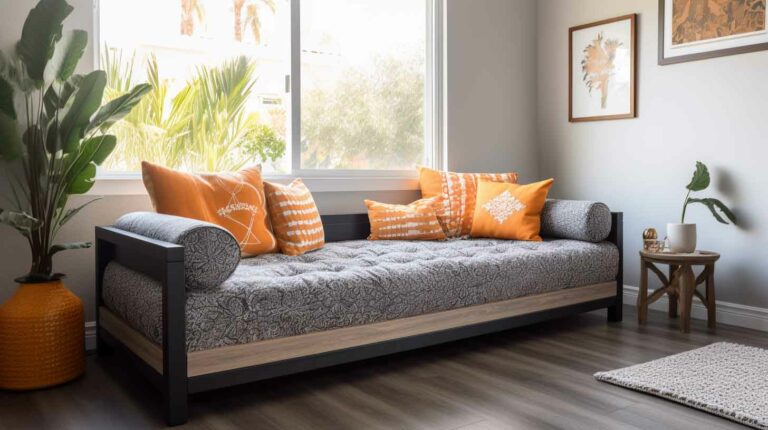how to arrange plants in living room for creating a relaxing haven
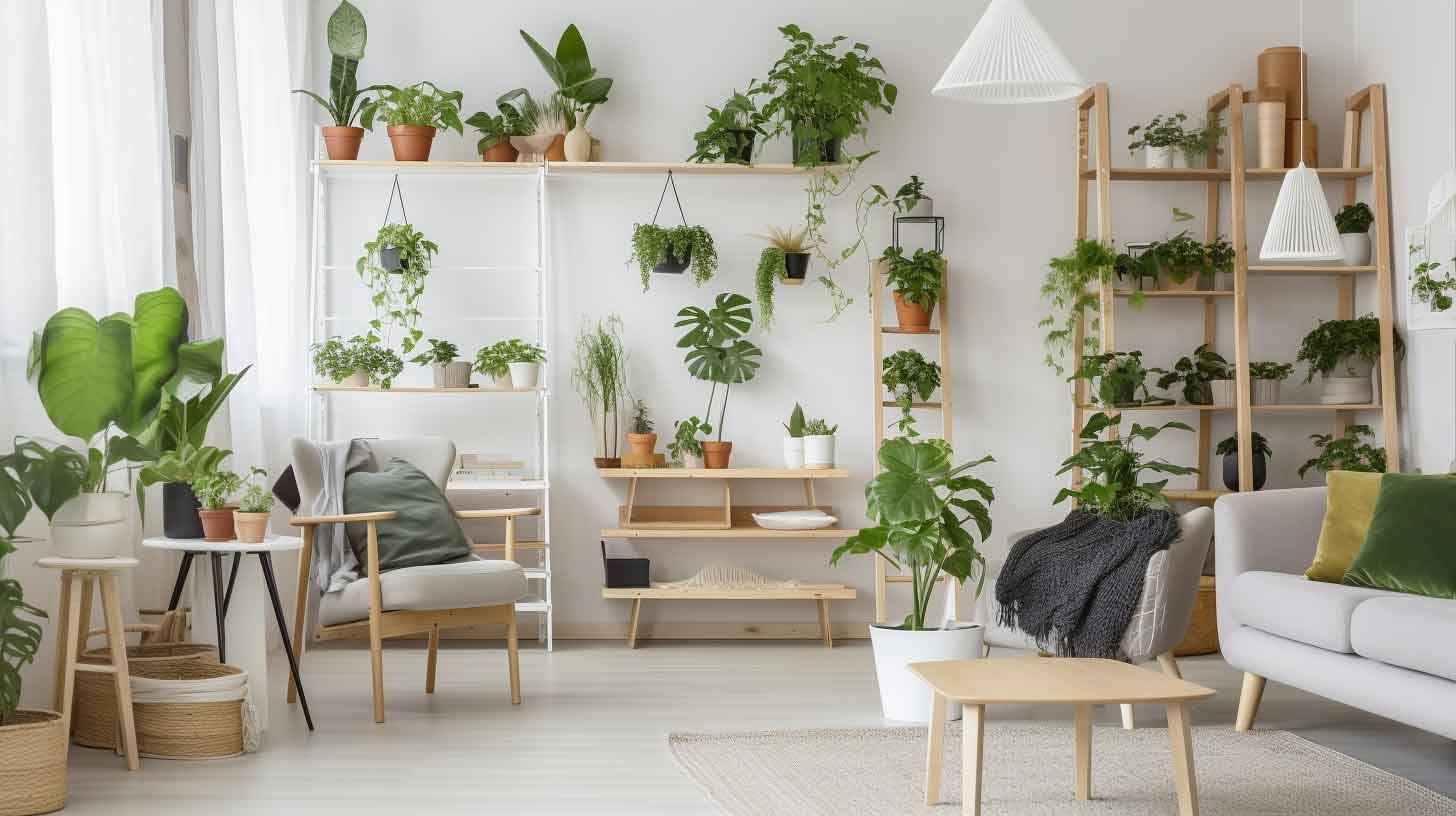
If you’re feeling intimidated by the thought of incorporating plants into your living room decor, you’re not alone. With so many different species, styles, and combinations to choose from, it’s understandable to feel overwhelmed.
But don’t worry, there are plenty of ways to incorporate plants into your living room in a way that is both beautiful and easy to care for.
In this guide, we’ll show you how to arrange plants in living room from choosing the right plants, decide on placement, and achieve a cohesive and visually pleasing display.
By the end, you’ll feel confident in your ability to create a living room that is both beautiful and healthy with the help of plants.
Plant size
One important factor to consider when arranging plants in your living room is size. You’ll want to choose plants that are in proportion to the size of your living room and the available space for plants.
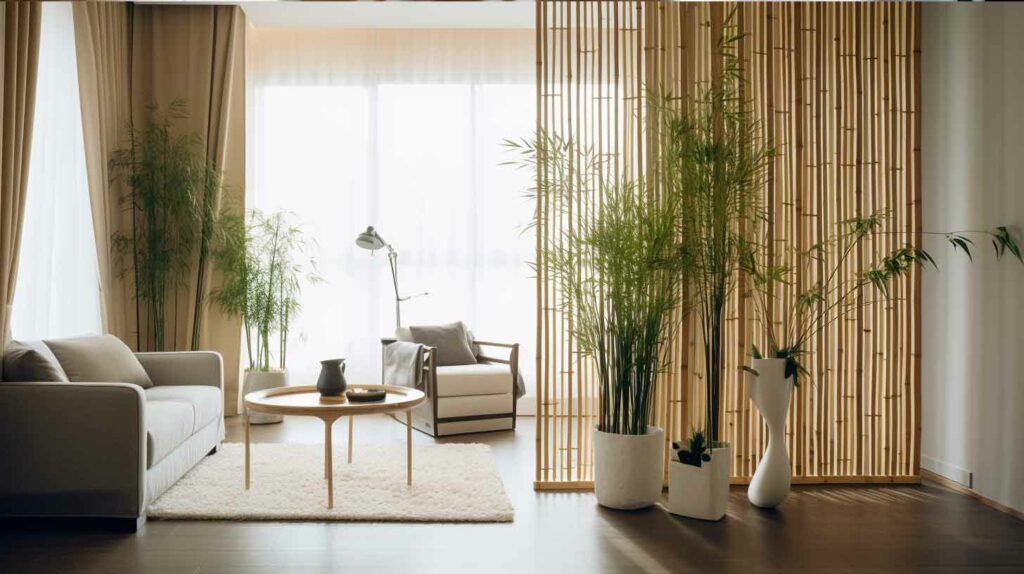
For example, if you have a large living room with plenty of floor space, you might consider a large, statement plant like a fiddle leaf fig or a palm tree.
These plants will make a big impact and add some greenery to your space. Here are some places you can arrange your larger plants.
- In the corner of the room to anchor the space and add some greenery
- As a focal point in the room, such as behind a couch or in front of a window
- As a room divider, using a tall, narrow plant like a bamboo palm or a snake plant
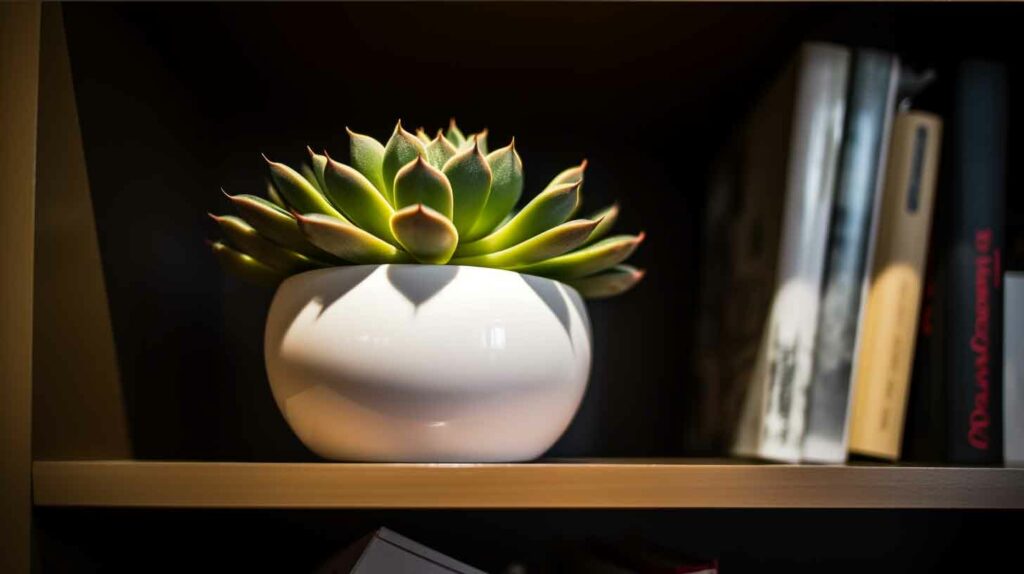
On the other hand, if you have a smaller living room or limited floor space, you might want to choose smaller plants or a group of smaller plants to avoid overwhelming the space.
A snake plant or succulent would be good options for a smaller living room. Some ideas where to put your smaller plants:
- On a bookshelf or mantel to add some greenery without taking up too much space
- On a coffee table or end table to add a pop of color and some greenery
- As a tabletop display, such as in a group of small pots or a glass terrarium
- Hanging from the ceiling, using a macramé plant hanger or a hanging planter
In general, it’s a good idea to have at least one large plant or a group of smaller plants for every 100 square feet. This will help you strike a balance and create a cohesive, visually pleasing display without overwhelming the space.
Rule of three
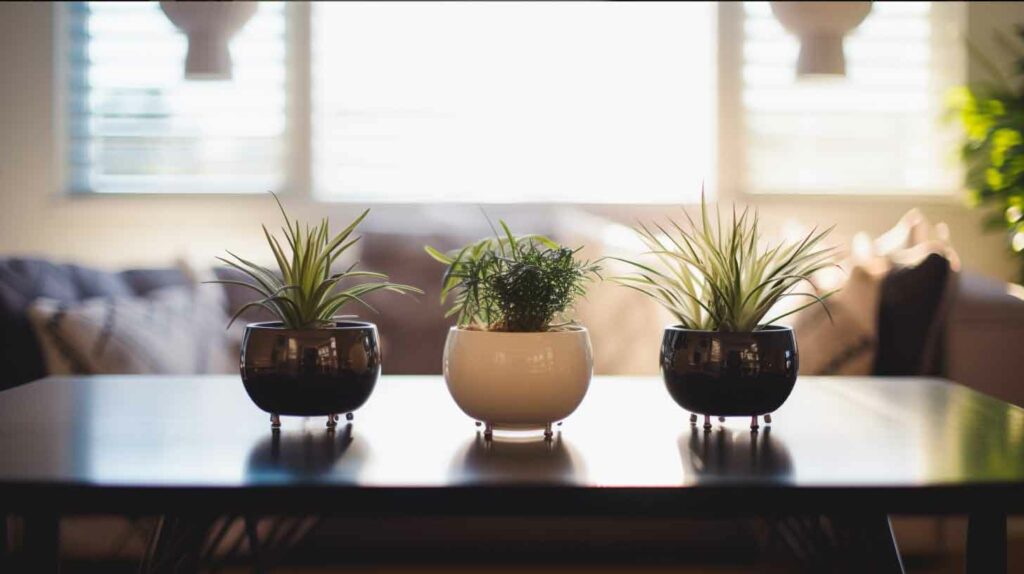
The rule of three is a design principle that suggests that things that are arranged in odd numbers are more visually appealing and effective than things arranged in even numbers. This is because odd numbers tend to create more tension and energy in a composition, while even numbers tend to feel more stable and balanced.
When it comes to arranging plants in your living room, the rule of three can be a useful guideline to follow. For example, you might group three smaller plants together on a bookshelf, or arrange three pots of different sizes and styles on a coffee table.
The rule of three is more effective when the plants have some visual variety, such as different sizes, shapes, and colors. Using three identical plants can look unbalanced and dull. Try to avoid this common mistake.
When purchasing plants to decorate your living room, there are several factors to consider:
Lighting conditions
Different plants have different lighting requirements. Some plants need bright, indirect light while others can tolerate low light conditions.
For bright, indirect light, consider a snake plant or pothos. For low light conditions, a peace lily or snake plant would be good options. Make sure to choose plants that are suitable for the lighting in your living room.
- Size and scale
Consider the size and scale of the plants in relation to the size of your living room. A large fiddle leaf fig would be suitable for a large living room, while a small succulent or air plant would work well in a smaller space. Large plants can be overwhelming in a small space, while small plants can get lost in a large room. - Maintenance needs
Some plants require more maintenance than others, such as regular watering and fertilizing. A cactus or succulent requires minimal watering and can be left for longer periods without care, while a fiddle leaf fig or philodendron needs more frequent watering and fertilizing. Make sure to choose plants that fit your lifestyle and have the time and resources to care for them properly. - Personal preference
Choose plants that you personally enjoy and that fit your style and decor. For example, if you have a modern, minimalistic aesthetic, a cactus or succulent may be a good choice. If you prefer a more traditional look, a fern or palm plant could be a good option. - Allergies
If you or anyone in your household has allergies, be sure to choose plants that are non-toxic and hypoallergenic. Non-toxic and hypoallergenic plants include spider plants, bamboo palm, and snake plants. - Cost
Consider your budget when purchasing plants. There are options at various price points, such as affordable options like pothos, snake plants, and spider plants, as well as more expensive options like fiddle leaf figs and orchids. Choose a plant that fits your financial resources.
Pots
When selecting pots and planters for your living room, it’s important to consider the overall style and decor of the room, just like you would with the plants themselves. Choose pots that complement the existing decor and add to the overall look and feel of the space.
Mix and match different sizes, shapes, and styles to create a cohesive display. Just make sure to choose pots that are in proportion to the size of your plants and the size of your living room. Large pots can be overwhelming in a small space, while small pots can get lost in a large room.
Choose pots that enhance the overall look of your plants and living room. Here’s some examples:
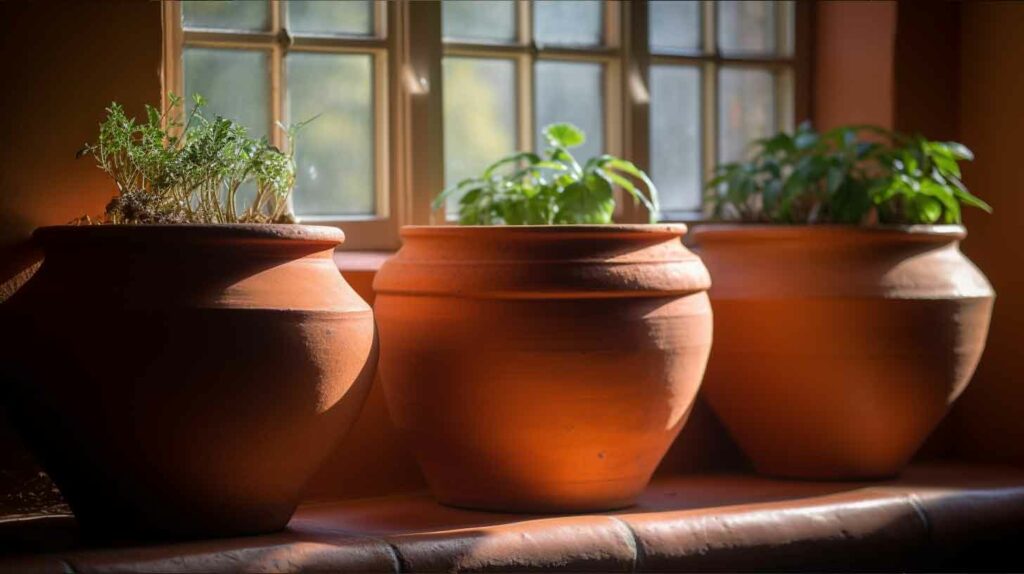
- Terracotta pots
These pots have a classic, rustic charm and are often associated with Mediterranean or Tuscan-style decor. - Concrete pots
Concrete pots are a popular choice for modern and minimalistic spaces. They have a sleek, industrial look and come in a range of colors and sizes. - Woven baskets
Woven baskets add a natural and bohemian touch to your living room. They work well with plants that have a trailing habit, such as pothos or philodendron. - Glass terrariums
Glass terrariums are a unique and stylish option for small plants or succulents. They have a modern and elegant look and can be used as a tabletop display or hung from the ceiling.
When selecting pots and planters for your living room, it’s important to consider the overall style and decor of the room, just like you would with the plants themselves. Choose pots that complement the existing decor and add to the overall look and feel of the space. Mix and match different sizes, shapes, and styles to create a cohesive display.
Just make sure to choose pots that are in proportion to the size of your plants and the size of your living room. Large pots can be overwhelming in a small space, while small pots can get lost in a large room. Choose pots that enhance the overall look of your plants and living room.
What are the 3 best colors plants that go well together?
Plants with complementary colors tend to look good together.
- Orange and blue
These two colors are often found in nature and can create a soothing, calming atmosphere when used together.
- Purple and yellow
These complementary colors can create a vibrant and bold look when paired together.
- Red and green
This combination is often used during the holiday season, but can also be used throughout the year for a festive and traditional look.
You can also create a cohesive look by choosing plants with similar foliage colors, such as various shades of green. Mixing and matching different leaf shapes and colors can also add visual interest to the space.
Can you have too many plants in the living room?

While it’s generally good to have plants in your living room, it is possible to have too many. Having too many plants can clutter the space and make it feel overwhelming. It can also be challenging to properly care for a large number of plants, as they each have specific watering and care requirements.
It’s important to strike a balance and choose a number of plants that fits the size of your living room and your lifestyle. Consider the amount of available space and the amount of time and resources you have to care for the plants.
A good rule of thumb is to have at least one large plant or a group of smaller plants for every 100 square feet. This will allow you to enjoy the benefits of having plants in your living room without overwhelming the space.
Conclusion
We hope this guide has been helpful in guiding you on how to arrange plants in your living room. But, don’t be afraid to experiment with different placements and arrangements to find what works best for you.
If you enjoyed this article, be sure to check out our other plant-related articles for more inspiration and tips. Happy planting!

